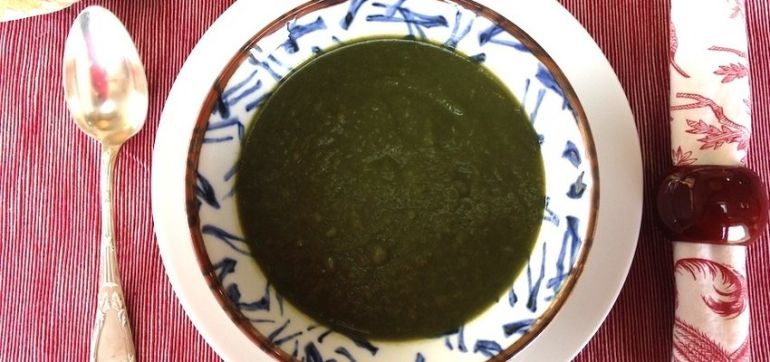Lose Weight > Common Sense To Lose Weight > Common Sense Article > Why The Low GI Diet Is The Key To Your Weight Loss Goals!
Why The Low GI Diet Is The Key To Your Weight Loss Goals!
Copyright 2005 Wesley Atkins
Losing weight is one of the hardest goals Americans annually seek to accomplish. The weight loss industry is huge and incorporates every type of fad diet, pill, cream, and lotion possible. Instead of falling prey to one of these "lose weight quickly" fads, entrust your weight loss into something that will guarantee you results: a low GI diet.
This diet is certainly nothing new and does not require purchase of any expensive diet foods that are usually packed with preservatives. A low GI diet is much more than a typical diet—it is truly a change in your lifestyle, health, and overall well being.
What does GI Stand for Anyway?
The "GI" in GI diet stands for Glycemic Index. The Glycemic Index is based on the carbohydrate content of food and how quickly those carbohydrates affect your blood glucose level. Foods with a high Glycemic Index are quickly digested and turned into sugar. It is no surprise that these foods usually lack necessary vitamins or nutrients and contain needless calories and fats. Foods with a high Glycemic Index (foods ranking 70 or greater on the scale) include:
• Foods high in sugar or glucose
• Baked or mashed potatoes
• White Rice
• Regular (not whole grain) bread
• Cookies, cakes, muffins, doughnuts
• Junk foods
A Little Thought and Preparation Make a Big Difference
The method of food preparation also affects the Glycemic Index. Foods that are cooked or pre-cooked have a higher GI. For example, instant oatmeal or grits have a higher Glycemic Index than the same foods cooked in a more traditional manner. Due to this reason, individuals who are on a low GI diet tend to put more thought into foods consumed and tend to consume less pre-cooked, pre-packaged foods filled with preservatives or additives.
It's All About Choices
By choosing to consume foods with a low Glycemic Index, you are making a conscious effort to consume foods that are nutritious and good for you. This diet is also critical for individuals with diabetes or other conditions that make it necessary to monitor their blood sugar levels. Make the conscious commitment to embark on a low GI diet and create a healthy lifestyle.
What foods are classified as low GI? You will certainly be surprised with the incredibly long list of options available to individuals currently pursuing a low GI diet! These low GI (55 or less) foods include:
• Most fruits (apples, pears, oranges, berries, etc.)
• High fiber grains (bran, whole grain wheat's)
• Pastas
• Whole milk
• Low-fat yogurt
• Lentils
• Whole grain cereals (Special K, All Bran, etc)
These foods are readily incorporated into a daily diet and intermixed with foods that have a medium rank on the Glycemic Index between 56 and 69. These foods should be eaten sparingly, thoroughly mixed with the low GI foods. Such medium GI foods include:
• Boiled potatoes
• Dried fruits (raisins and apricots)
• Ice Cream
• Shortbread cookies
Where's the Meat?
If you are wondering where fresh meat, eggs, cheese, and vegetables rank on the Glycemic Index, it is because these foods do not contain carbohydrates. For this reason, they are deemed suitable to consume and still abide by the guidelines of the low GI diet. Whether you are a bona fide meat eater or a staunch vegetarian, you are sure to succeed on this great diet.
A low GI diet is excellent for any individual wishing to lose weight without giving up the foods they love. This diet will allow you to joyfully consume beloved breads and perfect pastas without guilt! If you find yourself wanting a lifestyle change and are ready to lose weight, you'll definitely want to look for more in-depth information on the easily adaptable GI diet.
Related Articles
-
10 Ways Your Personality Affects Your Weight
V
-
Gastric Band Operations Is Not The Best Way To Lose Weight
Weight Loss Hypnotherapy is the answer to safe and guaranteed weigh
-
Menopause raises heart disease risk, linked to more fat around heart
Menopause is found to raise heart disease risk and is linked
-
Teen Depression: Is There A Hopeful Outlook?
Teen depression strikes one in five children. This is a very frigh
-
7 Magical Steps to Kick the Binge Eating habit out of Your Head.
Binge eating / overeating is mainly an emotional problem. The good
-
3 Diet Supplements that Actually Work
So many weight loss supplements, and so many inflated claims. It ca
- DON'T MISS
- Superfoods for Getting Over Food Poisoning
- Are Your Gains Muscle or Fat? Heres How To Measure Them
- Healthy Eating Tips For Losing Weight
- Five Easy Ways To Lose Weight Fast
- Probably The Best Weight Loss Program Ever
- Taco Bell Launches the Drive Thru Diet
- Determined Diet Bloggers Share Their Best Weight Loss Tips
- Do You Need To Lose Weight? Reality Check
- Why Hypnosis for Weight Loss?
- How To Decide On A Lose Weight Program




